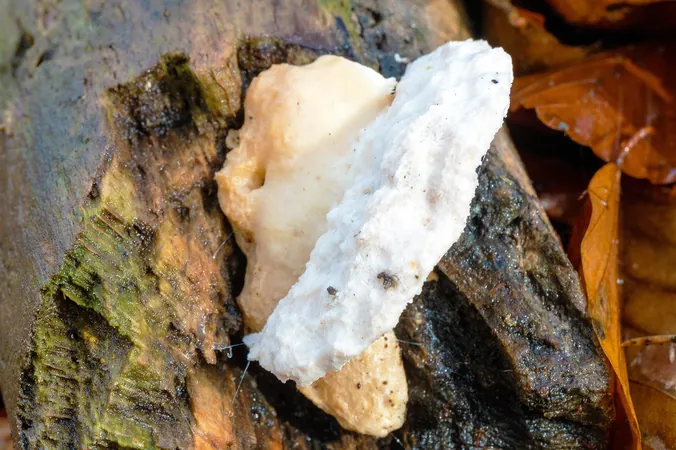
Scientists Uncover the Most Bitter Substance on Earth—And It Could Change Everything!
2025-04-17
Author: Wei
The Surprising Science of Bitterness
Bitterness often sends us recoiling from a plate of unsavory vegetables, but the story behind this taste is far more complex. Researchers are delving into the intricate world of bitter molecules, revealing how our bodies detect and respond to them.
The Bitter Mushroom Mystery
In a groundbreaking study, scientists have turned their attention to the elusive bitter bracket mushroom, or Amaropostia stiptica. This forest fungus, which thrives on decaying wood, is renowned for its intense bitterness. While harmless, it plays a vital role in eco-recycling, breaking down tough plant materials and returning nutrients to the forest floor.
What Makes Amaropostia Stiptica So Unique?
Found primarily in tropical and subtropical forests, this crust fungus sports a smooth, creamy beige to light yellow exterior. Though it may lack the glamor of more colorful fungi, its contribution to the ecosystem is invaluable.
Unlocking the Secrets of Bitter Compounds
Most knowledge about bitterness comes from flowering plants or synthetic sources, with over 2,400 bitter compounds cataloged in the BitterDB database. However, many animal, bacterial, and fungal bitter compounds remain a mystery, making mushrooms prime targets for research.
Bitterness: Toxic or Not?
Contrary to popular belief, not all bitter substances indicate toxicity. The deadly death cap mushroom, for instance, is bitter-free despite its lethal toxins. Our bodies rely on a system of taste receptors, known as TAS2Rs, to identify potential dangers, but these receptors are also found beyond the tongue, raising questions about their broader functions.
Discoveries from the Dark World of Fungi
Recent research efforts aimed at uncovering lesser-known sources of bitterness led to the identification of three new bitter compounds derived from Amaropostia stiptica. Among these, oligoporin D was particularly notable, activating the TAS2R46 receptor at shockingly low concentrations—like a pinch of baking soda in an ocean!
A Future of Flavor and Health Benefits?
The implications of these findings are profound. As we expand our understanding of bitter compounds, new opportunities arise for creating flavorful foods that support digestion and satiety.
The Path Ahead
This discovery highlights just how much is still to be unearthed in the world of bitterness. It's not merely a taste sensation; it could be a key to health advancements. With every addition to the bitter compound database, researchers are closer to decoding the significant role taste plays in our well-being.
Published in the Journal of Agricultural and Food Chemistry, this study could unleash a wave of innovations in both culinary arts and dietary health!


 Brasil (PT)
Brasil (PT)
 Canada (EN)
Canada (EN)
 Chile (ES)
Chile (ES)
 Česko (CS)
Česko (CS)
 대한민국 (KO)
대한민국 (KO)
 España (ES)
España (ES)
 France (FR)
France (FR)
 Hong Kong (EN)
Hong Kong (EN)
 Italia (IT)
Italia (IT)
 日本 (JA)
日本 (JA)
 Magyarország (HU)
Magyarország (HU)
 Norge (NO)
Norge (NO)
 Polska (PL)
Polska (PL)
 Schweiz (DE)
Schweiz (DE)
 Singapore (EN)
Singapore (EN)
 Sverige (SV)
Sverige (SV)
 Suomi (FI)
Suomi (FI)
 Türkiye (TR)
Türkiye (TR)
 الإمارات العربية المتحدة (AR)
الإمارات العربية المتحدة (AR)